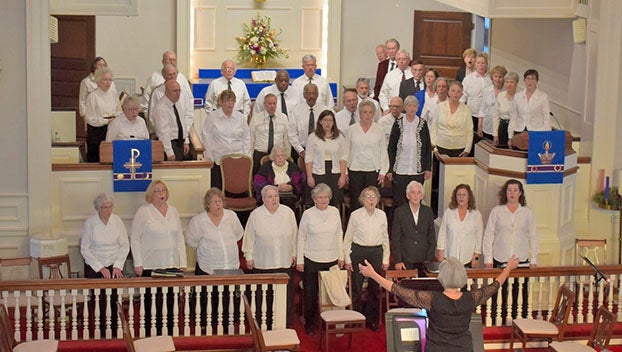Nature’s light show
Published 10:19 am Thursday, December 5, 2019
As winter approaches, the hours of night lengthen. People throughout our community take advantage of the darkness to display seasonal lights.
Nature is planning to put on her own light show. The Geminid meteor shower arrives annually in mid-December. This year, the peak will be on Dec. 14. Although light from the nearly full moon will overpower the dimmer meteors after moonrise, if skies are clear some meteors will likely still be visible.
Meteor showers occur when the earth’s orbit takes it through debris fields where other solar system bodies have passed and shed particles. Typically, they are associated with comets.
Comets have been likened to dirty snowballs, roughly spherical chunks of ice and rock. As they orbit the sun, the solar wind causes them to shed material. When a comet is visible in the sky, its tail structure is created by the venting of particles. Most meteor showers are associated with specific comets.
Halley’s comet is linked to two meteor showers. Earth’s orbit intersects with Halley’s orbital path at two points. The first, the Eta Aquarids, occurs in early May when Earth crosses the path made by the comet as it approached the sun. The second, the Orionids, occurs in the latter half of October as Earth crosses the path created by the comet as it moved away from the sun.
Comet Swift-Tuttle is associated with what is arguably the year’s most famous meteor shower, the Perseids. The Perseids peak in mid-August. Warm summer temperatures create favorable conditions for outdoor viewing, even during the frequently cooler pre-dawn hours, which are associated with the thickest portion of the meteor stream. Under ideal viewing conditions, the Perseid shower produces around 100 meteors per hour.
The Geminids are different. They are created by fragments left behind by an asteroid rather than a comet. Dubbed 3200 Phaethon, the asteroid responsible for the Geminid meteor shower follows an orbit that brings it closer to the sun than most other asteroids. For this reason, it was named for the character in Greek mythology who lost control of the sun’s chariot and scorched part of the earth. The bits of material responsible for the meteors it creates tend to have more mass than other meteors, and they move more slowly. This combination of characteristics can make them appear brighter in the sky. The Geminid shower can yield up to 120 meteors per hour, depending on viewing conditions. In my opinion, the Geminids produce the year’s best meteor show, but viewing enthusiasm is sometimes hampered by December’s chilly nights.
Meteor showers are named for the constellation associated with the point from which they seem to radiate, called the radiant. Although the momentary streaks of light can appear anywhere in the sky, if you could trace their lines back to their origin, they would converge at a particular spot. For the Geminids, that location is near the two brightest stars in the constellation Gemini. The Perseids have a radiant in Perseus, the Eta Aquarids in Aquarius, the Orionids in Orion, and so on.
The meteors themselves are created by particles that are smaller than many people realize, from the size of a grain of sand to as large as a pea. When the earth passes through an area where a line of such crumbs exists in space, the tiny objects encounter the molecules of earths’ upper atmosphere. The friction caused by this collision creates heat, which vaporizes the particle. This in turn transfers energy to the molecules and atoms of the atmosphere, creating a momentary streak of glowing light. Meteorites, objects that actually strike the ground, are associated with much larger objects that orbit the sun randomly rather than the debris zones that create meteor showers.
I’d like to invite you to join me on the High Bridge, Saturday evening, Dec. 14, beginning at 6 p.m., to watch for Geminid meteors. The best time to spot them will likely be in post-twilight darkness before moonrise. The waning gibbous moon will rise over the Appomattox River valley about 7:30 p.m. and put on a light show of its own. Bundle up and meet me there.
KAREN BELLENIR has been writing for The Farmville Herald since 2009. Her book, Happy to Be Here: A Transplant Takes Root in Farmville, Virginia features a compilation of her columns. It is available from PierPress.com. You can contact Karen at kbellenir@PierPress.com.





